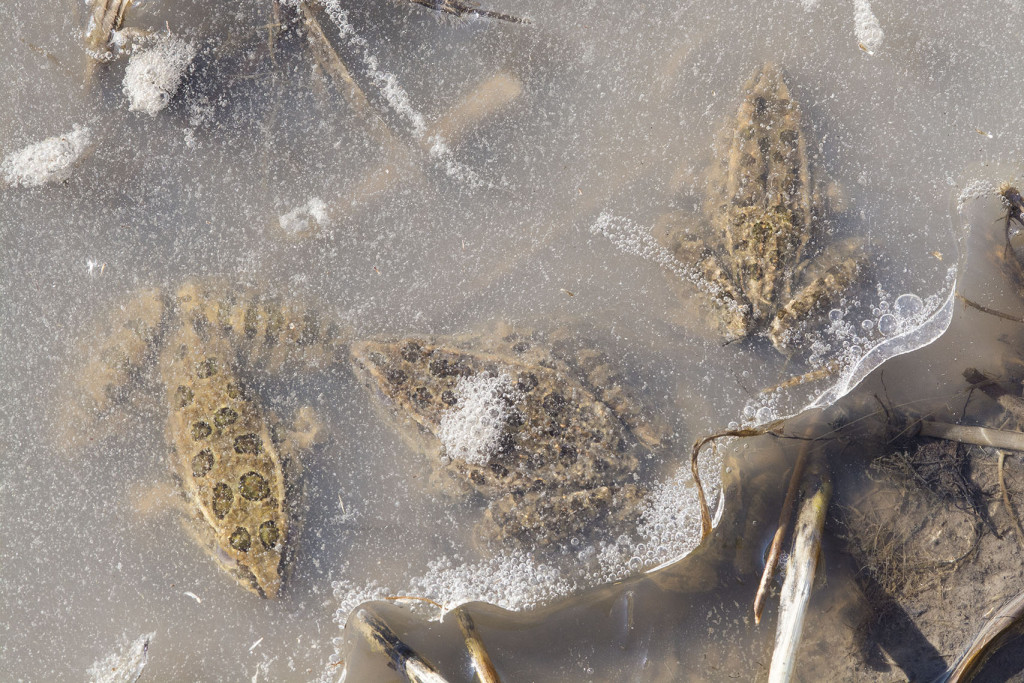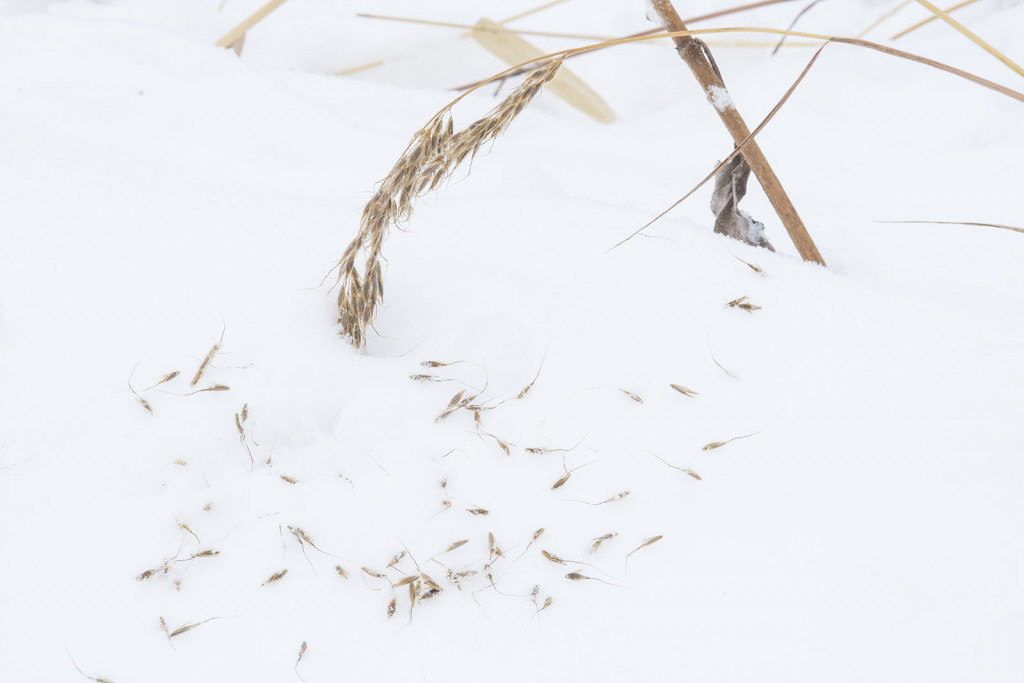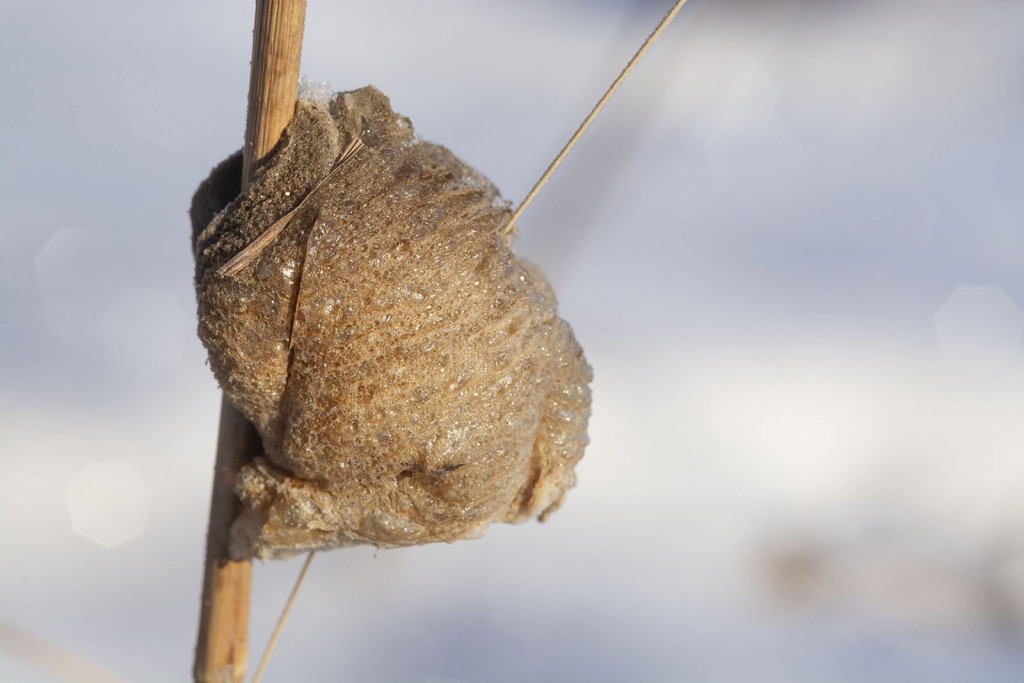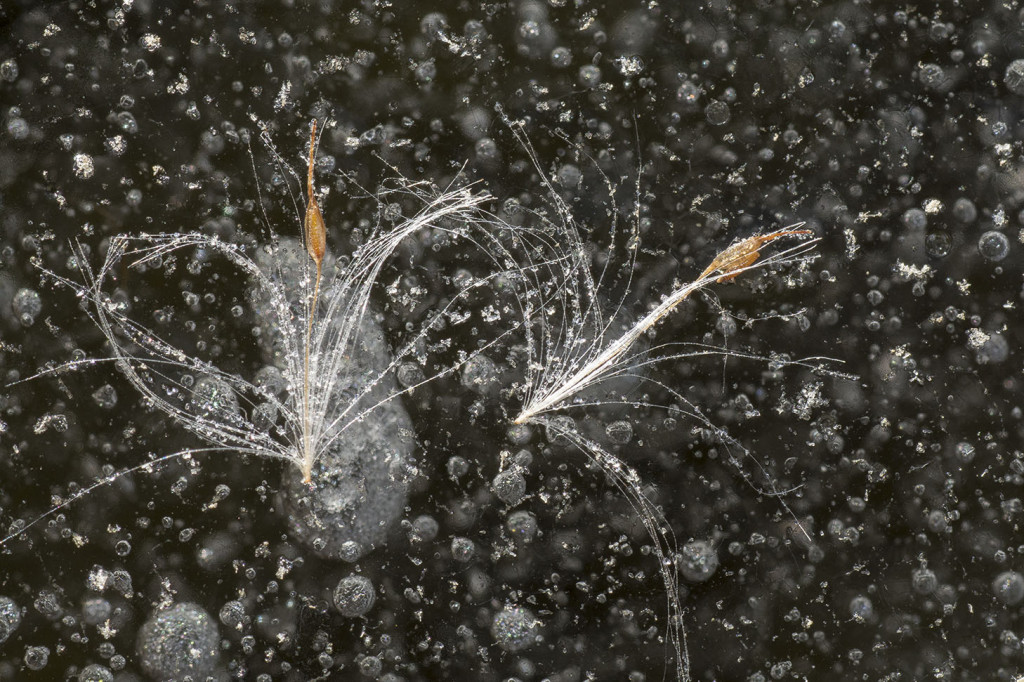A Great Time to Observe Nature
Enlarge

Story and Photos by Chris Helzer
Anyone can hike on a warm day, surrounded by birdsong and verdant meadows of wildflowers. The world is full of sights and sounds. But in the winter? That sounds ridiculous. It’s cold outside, the plants are all brown and animals are either hibernating or vacationing in warmer places. What are you supposed to do, tromp through the snow, bundled up like that one kid in that one movie? Well, yes.
Whether you explore the local trail or head out to your favorite state park or recreation area, plenty of animals, animal signs and other winter attractions will make your trip worthwhile. Sure, it’s nippy out there, but throw on an extra layer, find that second glove and go see what’s happening in the world. Here are four great reasons to leave your cozy home and venture into the cold.
No. 1 Animals
While many animals either migrate out of Nebraska or enter a dormant state during the winter, many others are still active, at least some of the time. Large mammals, such as deer, can sometimes be easier to see in the winter than the summer, in part because the absence of leaves on trees makes it harder for them to hide in woodlands. Coyotes, foxes, opossums and other medium-sized mammals often are out and about, too, especially on warmer days.

Winter brings opportunities to see a different suite of bird species than can be spotted during the rest of the year. Juncos, Harris’ sparrows, tree sparrows, Lapland longspurs and bald eagles are just a few species that are either exclusively or more commonly found during the winter. Species like meadowlarks and horned larks establish and defend individual breeding territories during the summer, but form roving gangs during the winter, providing opportunities to see lots of them at the same time.
Despite their reputation as harbingers of spring, flocks of American robins also can commonly be seen during the winter, searching for fruits on eastern red cedar and other trees. Upland game birds, including northern bobwhites, ring-necked pheasants, sharp-tailed grouse and greater prairie chickens, can be flushed up in big groups, depending upon which part of the state you’re in.
If you’re willing to look a little more closely, smaller animals are around during these months, too. Walking along the edge of frozen lakes and wetlands can sometimes reveal animals either in or under the ice, including numerous insects. Some of these insects become encased in ice because they died and then were captured by the freezing water. Others might simply be in a dormant state, their cells prevented from rupturing by a kind of natural antifreeze produced by their bodies. If you’re lucky, you might even stumble across frogs moving around slowly beneath a thin layer of ice, breaking all the rules you learned in elementary school about cold-blooded animals.

Speaking of surprisingly mobile creatures in cold weather, a number of invertebrates stay active during the winter, even on very cold days. Examples include some ants, spiders and one species of springtail called the snow flea. Snow fleas are tiny and abundant invertebrates that spend most of their time feeding on organic matter near the surface of the soil, including underneath layers of snow. Sometimes, however, and for reasons yet to be discovered, they’ll appear on top of the snow in large congregations, looking like dirty snow when viewed from a distance.
No. 2 Tracks and Other Signs
Spotting animals during a winter hike is fun, but your success often relies upon good fortune as much as outdoor expertise. On the other hand, if you enjoy a little detective work, you can always find signs of animal activity, even if you don’t see the animals themselves. Tracks, scat and other animal signs are all over the place during the winter. Fresh snow, of course, provides an especially great opportunity to find clues about animal behavior.
Footprints are probably the easiest way to see what critters are up to. If you have the patience, you can follow a set of tracks for hours, noting where an animal changes direction, where it stops to feed or mark its territory, and — eventually — where it shelters overnight or during inclement weather. If you’re lucky, you can even come across evidence of interactions between animals, including large wing prints in the snow at the end of a long trail of mouse tracks.

If you are particularly observant while hiking through the snow, you can learn a lot about the favorite winter foods of various animals. You can often find either neat piles or scattered arrays of empty seed hulls on top of the snow. Combining that evidence with the tracks leading to and from that site can often tell you what kinds of seeds are being eaten by birds, mice or other small creatures.
One seed-bearing plant that doesn’t get nearly enough credit for its value as bird food during the winter is ragweed. Ragweed pollen can be nightmarish for hay fever sufferers but makes up for that by producing numerous seeds that provide attractive forage for many different bird species through the winter months. It’s common to find a mass of songbird tracks scattered around and through a ragweed patch after a snowfall, and if you hang out nearby for long enough, you’ll likely get a chance to watch the birds return to finish their meal.
No. 3 Winter Shelters
With or without snow, careful observation can reveal where various animals are sheltering from cold weather. Some are obvious, like the large, matted patches of grass where deer hide out in tall prairie vegetation. Others are more subtle and require a keen eye to discover.
On cold mornings, the burrows of small mammals can sometimes be found by looking for an excess of frost near the entrances. Following tracks through snow, of course, makes that even easier if snow is available. Some mice eschew the underground life and make nests of fluffy seeds, feathers or fur either on the ground or in the branches of eastern red cedar or other trees.

Many invertebrates create winter shelters, too. Some, like praying mantises, build structures to keep their eggs safe until they hatch in the spring. Others burrow inside plant stems or other structures. In some cases, the presence of an insect inside a plant is given away by the “gall” produced as a response by that plant to the invasion. One of the most common and recognizable of those is found on goldenrod plants. A fly larva spends the winter inside those golf ball-sized masses, waiting to emerge as an adult in the spring — unless parasitoid wasps or woodpeckers get to it first.
Some spiders and moths use silk to build winter hideouts. Silk moths of various species overwinter in cocoons constructed with silk and leaves or other plant materials. Some adult spiders create insulated winter lodging in a similar manner. If you look carefully for small, odd-shaped masses of leaves stuck to grasses or branches, you might find some of those shelters.
No. 4 Patterns
In addition to animals and their various signs, there are lots of other vignettes of natural beauty available to winter hikers. Sunrise hikes after a snow or on a frosty morning are especially great for finding interesting patterns. As an extra bonus, low-angled and low-intensity morning light can produce excellent conditions for photographing those discoveries if you so desire.
Accumulations of frost crystals can highlight the edges of leaves and stems, transforming dull brown landscapes into glittering wonderlands. Hoarfrost, advection frost and rime are all formed in different ways, but create similarly spectacular results. Sometimes, magical foggy mornings turn everything in sight white with frost, but even patchy frost in low-lying areas or around ponds or other water sources is worth venturing out to admire.

Snow, especially combined with wind, also can create magnificent displays. Snow drifts make for sore shoulders and backs when they block your garage door or sidewalk, but they sure are pretty out in the wild. In addition to providing a canvas for animal tracks, grass leaves, branches or other structures also can trace fascinating patterns in fresh snow when guided by a strong breeze.
Hiking isn’t a three-season activity. Winter may not provide wildflowers, bird song, butterflies or even the red and gold leaves of autumn, but there is still plenty out there to make it worth lacing up your boots. There’s a good chance you’ll spot some wildlife, and even if you don’t, signs of life will be there if you look hard enough. Any day is a good day for a winter hike, but a frosty morning or fresh snow should stimulate you to drop anything you can and head out the door. Spring will come eventually, but in the meantime, enjoy these fruits of winter. ■
Chris Helzer is the Nature Conservancy’s director of science in Nebraska and a regular contributor to Nebraskaland Magazine.

The post A Winter Hike appeared first on Nebraskaland Magazine.
















